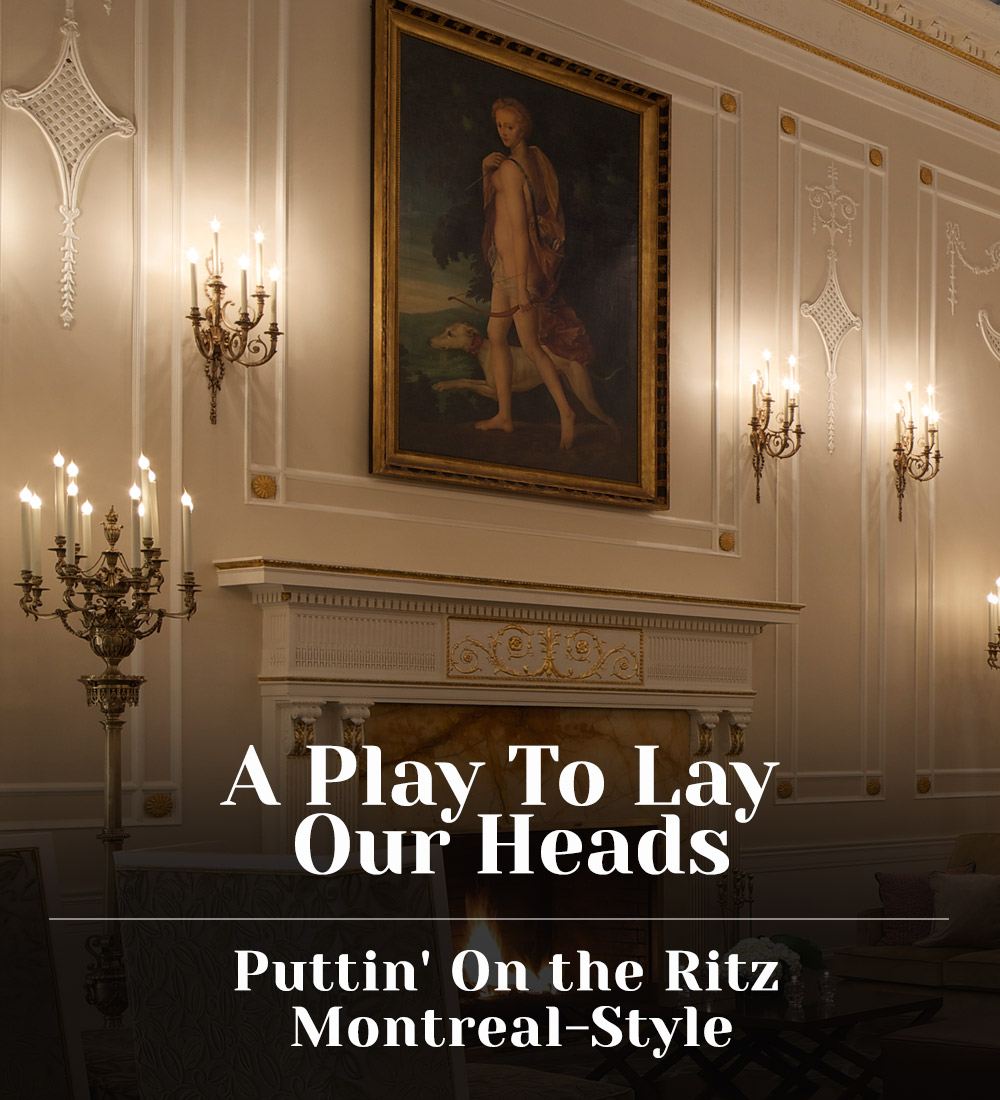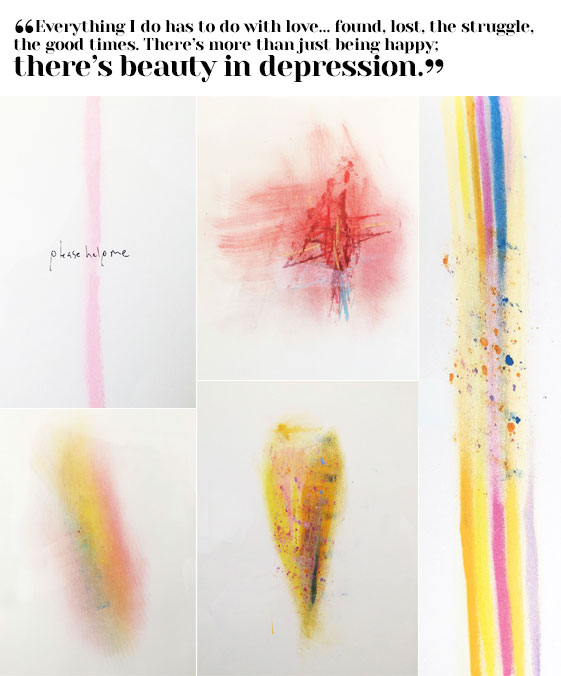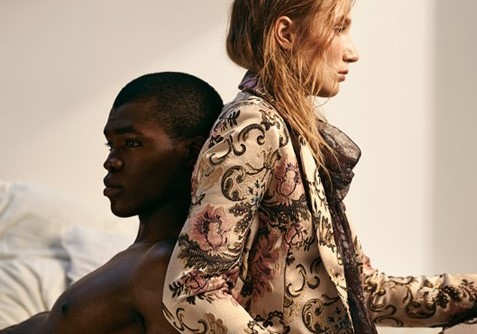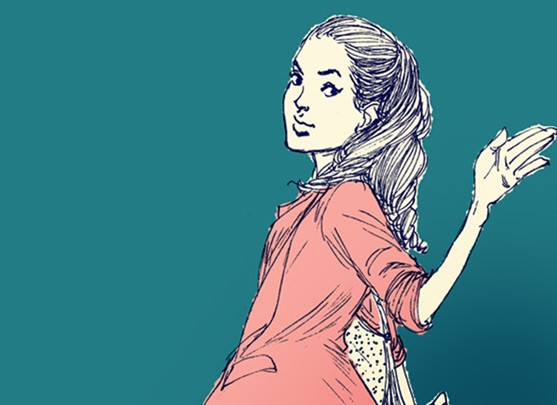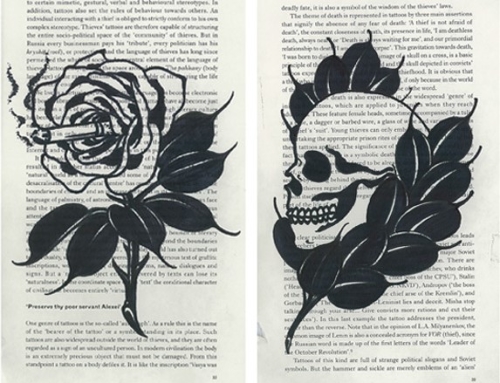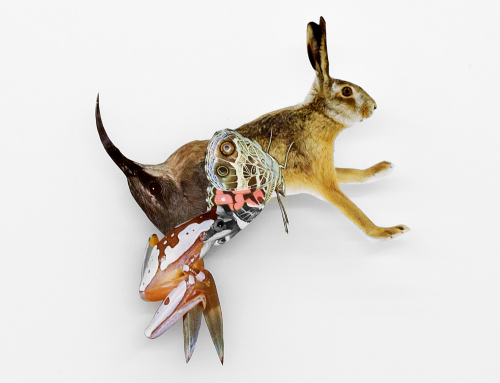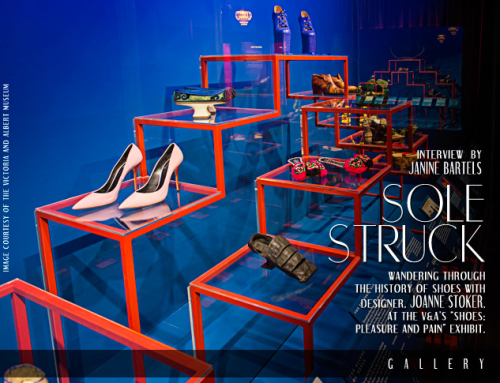In the summer of 1845, Henry David Thoreau set out to a small cabin on Walden Pond, a sixty-two acre body of water in Concord, Massachusetts, where he began an experiment in simple living. Here, Thoreau penned the pages of Walden; or, Life in the Woods: an outline of the transcendentalist’s philosophy of life, politics and nature. “I went to the woods because I wished to live deliberately, to front only the essential facts of life, and see if I could not learn what it had to teach, and not, when I came to die, discover that I had not lived,” he wrote.
Today, over a century and a half since the publication of Walden in 1854, the book is a pillar of the American literary canon with its author celebrated as a secular prophet, while the world Thoreau once observed, has in large part grown deaf to his “manual” of self-reliance; or so suggests the existence of a Walden Pond hashtag on Instagram… and all the yoga selfies that have ushered it to trend status.
And then one stumbles upon a canvas created by Kevin Drew and transcendentalism doesn’t feel quite as outdated.
Best known as the co-founder of Broken Social Scene, the singer/songwriter has recently discovered a new creative outlet: art. His tools are simple: pastel, ink and observation. His end product is complex, though Drew pleads pedestrian talents. “I’m not here to talk about it… or the process of it… I know that this is how I feel,” he declares, gesturing towards the canvases lining the gallery walls. “And I know that you could do the same fucking thing, if you wanted to. Maybe you want to write something down, take a couple of crayons, throw them in, step on them, let it sit for a bit and frame it.”
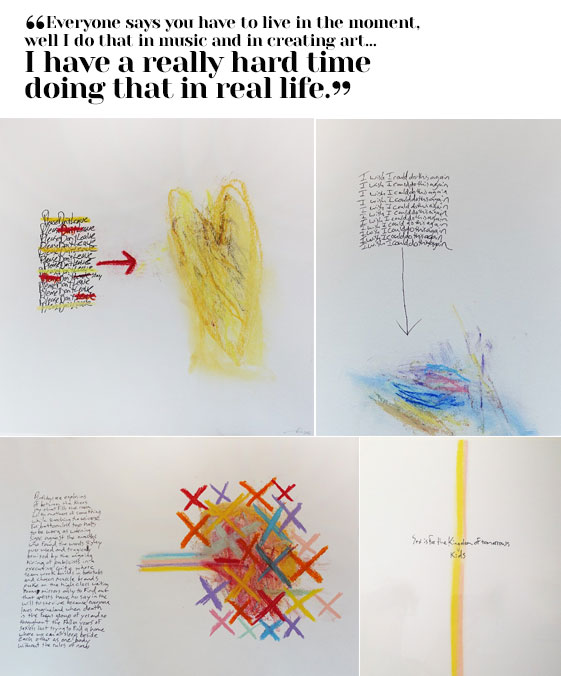
clockwise – “Please don’t leave,” 2016 :: “I wish I could do this again,” 2016 :: “Sex Is For The Kingdom,” 2016 :: “Birthdays are explosions,” 2016
Is it really as synthetic as all that, though? The number of works Drew sold on the opening night of his debut show, “Skid Marks of the Soul,” argue otherwise. Of the 50 odd pieces in the exhibit—on display at Toronto’s Analogue Gallery until April 28th—each is a declarative iceberg; all are emotive colour explosions, some coupled with cautionary observations, others with single statements that take aim at the Zeitgeist, and then there are those with no ink at all, standalone pastel renderings of a moment in time. “You hope in anything you do, you get to lose yourself… you get to transcend, and I always found, if I were to think about something, it would possibly take from creating it,” shares Drew. “Now, obviously, I do like to think about what I’m going to do, but I like to be very quick about it. Everyone says you have to live in the moment, well I do that in music and in creating art… I have a really hard time doing that in real life.”
New to the art game, Drew laughs when he recalls telephoning friends and asking “what’s it like having an art show,” prior to his debut exhibit. He also remembers struggling with his attachment to the works, while preparing for the show. “I was getting worried about letting them go.” As for what—or more, who—inspired Drew to share his art with the public, he credits Analogue Gallery owner, Lucia Graca Remedios for the kick start. “Because Lu wanted to do this and had such belief, I said, ‘alright, choose them with me,’” recounts the artist. “It made it very easy.” And from there, the duo leafed through Drew’s collection of work, which he estimates to hover in around 200 pieces in total (“I have booklets and booklets and booklets”), to assemble “Skid Marks of the Soul.”
The emotions spurred by living and Drew’s reflections on life and society inspire his art. “I was a kid that played drums when I had a bad day,” he answers, after asked if he now finds himself rushing for his pastels, whenever sunk in a mood. “[The work] is all based on mood, emotion and colour.” See his piece entitled “Suicide Shoes”—the phrase listed in repetition upon a rainbow of primary colours—for an example of his therapeutic expression. “Suicide shoes? Not really a particular great day,” he chuckles. “You know what I mean?” Then contemplate his raw assertion: “Sex is For the Kingdom of tomorrows Kids,” which floats on the canvas, hinged to calming streaks of muted yellow and pink, to gauge the fine line between Drew’s personal meditations and foreboding decrees that shoulder the weight of a generation. “There’s a thought in that line,” he says. “I think sex is going down on the list, when it comes to intimacy, and there’s a lot of other things that are getting put in there that shouldn’t be.”
“I regret the possible,” 2016
Other works, such as “Please don’t leave” employ a strike through key words to contort the sentiment of the canvas’ declaration. “I like the idea of trying to change the sentence as you’re going,” muses Drew. “Everybody wants to always be editing and changing because they have the aspect to do that now, and I just wanted to be able to talk about that… without writing it in a sentence.”
Drew is clearly an observer of life and society. As Walden challenged the status quo and expressed concerns shared by Thoreau’s contemporaries, “Skid Marks of the Soul” manifests the discontent of individuals opposed to the numbing consumerism and industrial narcissism of our modern culture.
With “Birthday’s are explosions,” Drew combs through sordid social norms that lean on dominant ideology and casts a shadow on what has come to be our way of living. His words scrutinize popular culture, asking after “the ongoing hiring of publicists in an executive suite where team work builds in bathtubs,” while leaving the viewer to ponder their side in the subliminal debate between the commercial and the simple, taking place on the canvas. Thoreau’s warning: “beware of all enterprises that require new clothes,” comes to mind.
clockwise – “Please Help Me,” 2016 :: “Skid Marks #13,” 2016 :: “Untitled,” 2016 :: “Skid Marks #20,” 2016 :: “Skid Marks #6,” 2016
And if the art itself was not proof enough of Drew’s philosophical machinations, a conversation with him would do well at convincing one that he’s here to “live deep,” as the wise man on the pond put it. Spot the transcendentalist’s warning in Drew’s comment: “We are becoming addicts and becoming so disconnected with human contact—human life. Everyone feels a sense of entitlement. You cannot do that. Popularity is not supposed to run our fucking lives.”
Despite affirming that it is in fact, his “soul” specifically, to which the title of the exhibit refers, “Skid Marks of the Soul,” as a whole, has the makings of a cultural touchstone. “It was for me, so it’s strange to turn it around and make it for them,” Drew comments, before his attention moves to a half-full basket of small prints from his show. “I’m going to frame all of these and put them up in my house,” he mumbles under his breath, while fingering through them.
Bottom line: Drew’s art is deliberate; there is an honesty behind it that seizes its viewer. Maybe that’s because, as he says, it was for him, but the journey into himself to create the art has rendered an expression of something that resonates with our generation. “Everything I do, has to do with love… found, lost, the struggle, the good times,” professes the artist. “There’s more than just being happy; there’s beauty in depression.” Like we said… touchstone potential.







